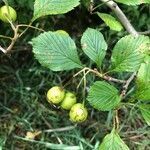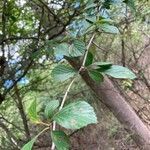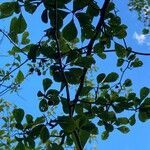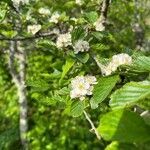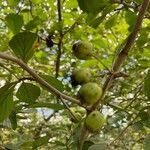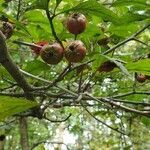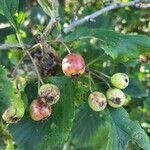A small tree. It grows to 9 m high. It has a stout trunk. The crown has horizontal spreading branches. The leaves are broad and dark green. They are toothed or slightly lobed around the edge. They are downy underneath. The flowers are white. They are in clusters 10 cm wide. The fruit are pear shaped. They are dull red with pale dots.
